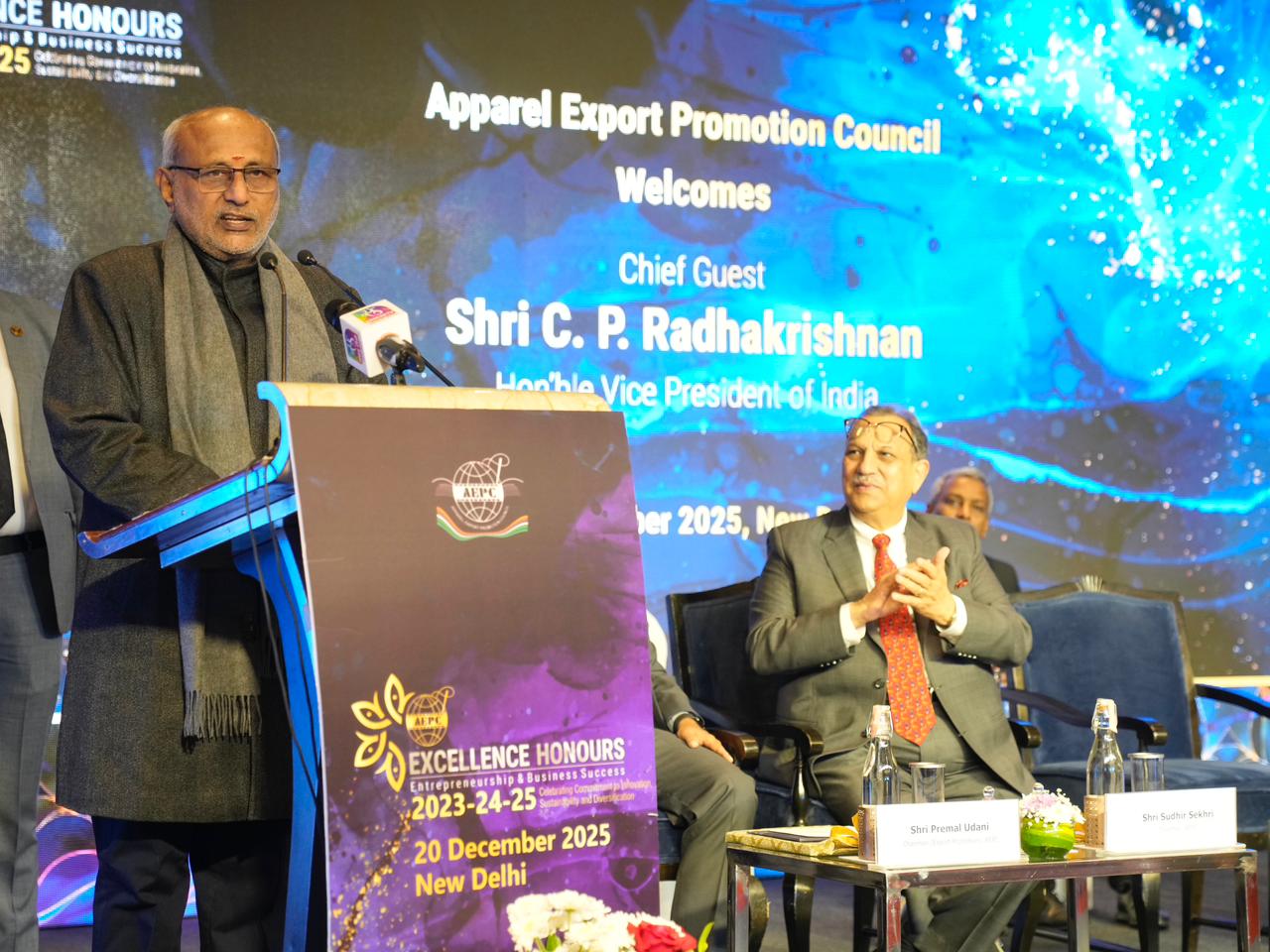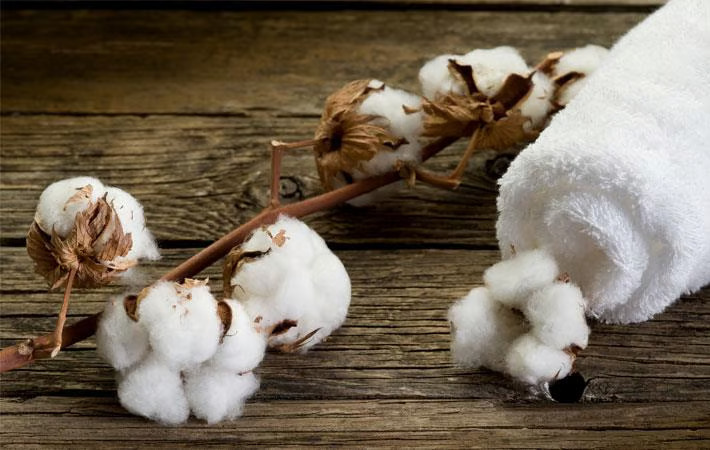FW
Fast fashion is at risk of hitting a speed bump if a looming crisis sweeps Bangladesh’s banking sector. Financial institutions in the South East Asian nation face a credit crunch following mass deposit withdrawals in March and soaring levels of non-performing loans.
A full-blown crisis could spill over into Bangladesh’s strongest link to the global economy — the production of textiles and garments for fast fashion brands and retailers such as H&M, American Eagle Outfitters, Zara, Walmart and Target. A banking crisis would have a knock-on effect on global garment supply chain.
Garment factories’ inability to secure loans due to a banking crisis could possibly hold up the supply chain of global clothing retailers. Bangladesh is the largest exporter of readymade garments after China. Knitwear and woven garment exports between July and January accounted for about 83 per cent of its exports.
Loans from commercial banks remain a key source of working capital for many of the thousands of factories in Bangladesh. Years of corruption and poor lending practices have sent levels of bad debt at some banks above 20 per cent, while capital buffers are dangerously low. Irregularities uncovered at two large commercial lenders have sparked a broad run on national savings certificates, a retail savings product, further hurting banks’ balance sheets.
India is attracting Vietnamese investments particularly in garments and textiles. India allows 100 per cent FDI in single-brand retail via the automatic route, which means foreign investors can pour money into the market without prior permission. Vietnamese garment companies can take advantage of the policy by investing in production of threads, fabrics and ready-made clothes. The Indian market of 1.3 billion people is a tempting opportunity for investors.
Currently Vietnam and India are among the five leading garment exporters in the world. Last year, the value of Indian apparel exports to Vietnam grew 44 per cent while Vietnam’s shipment of garment and textile products to India grew by 42 per cent.
Improving trade transactions and connectivity has been classified as a strategic target by the two countries. They aim at bringing bilateral trade to $15 billion by 2020. Last year, Vietnam’s textile and garment exports were up 10.23 per cent from the same period last year while its imports of textile and garment materials, mostly yarns and fabrics, amounted to $19 billion. Between April 2017 and January 2018, Vietnam-India trade reached $10.39 billion, surpassing the $10.13 billion figure recorded from April 2016 to March 2017.
The US is reviewing the generalized system of preferences (GSP) through which Indian exporters get preferential market access to the US. This means Indian exports could be hit. The US has been accusing India of unfair trade practices and has challenged most of its export subsidies at the World Trade Organization. Moreover, it has not granted India an exemption on an unilateral hike in steel and aluminium tariffs, unlike its other strategic allies.
The GSP program allows duty-free entry of 3,500 products from India, which benefits exporters of textiles, engineering, gems and jewelry and chemical products. Of the total US imports under GSP in 2017 India was the biggest beneficiary followed by Thailand and Brazil.
For India, GSP eligibility review is based on concerns by the US dairy industry and the medical device industry alleging Indian trade barriers affecting US exports in those sectors. India has very high import duties on dairy products to protect its domestic industry. It has also recently put price controls on medical devices like cardiovascular stents, drawing the ire from big US pharma companies.
Though India is worried about the move, it hopes a majority of US industries which get cheaper intermediate products from India due to GSP benefits will support continuation of the program.
Home Expo is on in New Delhi from April 16 to 18. It aims at be a benchmark event for premium merchandise. A wide range of tableware, home textiles, kitchen ware, house ware and bathroom accessories is being displayed. International buyers, leading manufacturers and exporters will share the same platform and exchange ideas related to the industry. The event will showcase finest artistic elements and craftsmanship in harmony with innovative designs and latest products.
More than 650 Indian exporters are displaying exquisite house ware, decorative, furnishing, flooring and textiles and furniture and furniture accessories. The major markets for home furnishings, floorings, home textiles, furniture and accessories, house ware and decoratives are the US, Canada, France, Italy, UK, Netherlands, UAE, Japan and Switzerland.
Home Expo India 2018 is expected to generate good business for direct imports. It is being organized by the Export Promotion Council for Handicrafts (EPCH). EPCH is the nodal export promotion body for handicrafts in India and plays an important role of a catalyst between exporters, buyers and the government with the main objective of boosting trade in handicrafts and also projecting India’s image in the global market as a reliable supplier.
Prices for Australian wool have been at a record high. Australian wool prices increased by almost 30 per cent compared to last year. Its being driven by China’s unstoppable appetite for Merino wool. China’s wool imports increased 4.5 per cent from the previous year.
Domestic consumption of woolen products in China has grown dramatically in the last five years. Previously most processing was for export, while today at least 50 per cent is for domestic use, and this is growing year on year. Consumers in China were previously driven by price. But today quality and color come first. This is mainly because the average Chinese consumers have higher disposable income. Unemployment is low, salaries are rising, and pension schemes have given people a greater security of income and more money to spend.
Although wool only represents 15 per cent of fibers consumed in China, volumes are so large that even 15 per cent represents a huge quantity of wool. Even in Mongolia, women wear woolen coats. Apart from China, steady demand from buyers in Europe and India will see wool prices firm up for some time.
Bangladesh garment manufacturers and exporters are exploring the Japanese knitwear market. Among Japan’s knitwear imports, Bangladesh has only a three per cent market share. Vietnamese apparels have grabbed the largest share of Japanese market.
With Japanese concerns about product quality, and their heavy dependence on China, Japan’s market was not open to Bangladesh for a long time. Now, China’s shift to a capital-intensive industry and Japan’s China-plus policy has created immense export opportunities for Bangladesh and it hopes to be a top knitwear supplier to Japan. The knits sector is growing in Bangladesh with strong backward linkages. The country hopes to increase its exports by 25 per cent by 2020.
Huge orders are expected to come from Japan during the Summer Olympic Games, to be held from July 20 to August 9, 2020, for knitwear products like T-shirts, polo shirts and sweaters. And Bangladesh hopes to get a huge chunk of these orders.
Japanese investors are interested in an economic zone coming up in Bangladesh and a delegation will visit Bangladesh in November to explore investment potential in the country. Currently, the number of Japanese investors in Bangladesh is 350, of which many are big multinational companies.
"While textile is one of the most important sectors in Cambodia’s economy, pressures from neighbouring countries is adversely impacting growth. To add to it, increasing automation and loss of preferential trade agreements is aiding to its woes. Employing 86 per cent of all factory workers, about 40 per cent of Cambodia’s GDP comes from garment exports, while more than 800,000 people are employed in garment factories."

While textile is one of the most important sectors in Cambodia’s economy, pressures from neighbouring countries is adversely impacting growth. To add to it, increasing automation and loss of preferential trade agreements is aiding to its woes. Employing 86 per cent of all factory workers, about 40 per cent of Cambodia’s GDP comes from garment exports, while more than 800,000 people are employed in garment factories.
Rising wages a bane

Owing to its low-cost labour, Cambodia remains a favoured destination for global garment brands. But recent years have seen steep wage hikes for garment workers, and the trend has accelerated ahead of July’s national elections. Minimum wage increased from $61 in 2012 to $170 this year. And to lure garment workers ahead of elections, Prime Minister Hun Sen has announced many populist policies, including increased burden for businesses to pay into their workers’ funds at the National Social Security Fund. In a recent speech, he said experts say $250 per month is a reasonable minimum wage by 2023 or it could be even higher. This could prove catastrophic, say factory owners.
Eric Tavernier, CEO, France-based textile firm We Group, feels they cannot survive a 12 per cent wage increase every year. However, they don’t have immediate plans to leave the country. Indeed a significant number of factories feel the pressure and are considering moving out, not many are willing to come in. He feels, compared to Vietnam and China, the Cambodia has maintained its profitable edge only due to lower wages, as Cambodia’s transportation, freight and export costs were much higher than neighbouring countries. As competition is intense, they can’t pass on the price increase to consumers. While Vietnam has high wages but there’s better oversight, better shipping and more flexibility in the market. However, Heng Sour, Labour Ministry spokesman says increased costs and wage hikes have not deterred investment in the sector. The January elimination of export management fee, along with exemptions allowed to prepayment tax – a 1 per cent minimum tax obligation paid on monthly revenue flows – are expected to amount to a $40 million tax break for factories this year.
Anthony Galliano, CEO, Cambodian Investment Management says Cambodia needs to improve a wide range of factors if it hoped to keep investment flowing. Cambodia’s attractiveness and competitiveness has elevated over the last 10 years, primarily due to low labour costs. But infrastructure, productivity, energy costs and logistics must improve if it is to remain a major player.
Automation not easy choice
Stephen Higgins, Managing Partner, Mekong Strategic Partners feels if costs are going up faster than productivity, then Cambodia is at risk of losing factories to other countries in the region. Embracing automation is the only way they can improve productivity quickly to justify wage rises. David Tan, MD, MyTeb Cambodia, notes Cambodia lacks both trained workforce and infrastructure to support an automated factory. Electricity and uptime remain a critical challenge. Without steady and uninterrupted supply of energy, many of automated processes will be disrupted, causing multiple delays and unproductivity. On similar lines, Marco Kalinna, Founder, Cosmos Services says Cambodia can only be competitive in areas where labour costs are still an advantage. Mass-automation will find a place where electricity costs are affordable and there is proximity to markets, and Cambodia has none of these.
Preferential trade agreements
The EU imports more than 40 per cent of Cambodia’s garments, making EBA a cornerstone of the Kingdom’s economy. Kalinna says, removal of duty free (status) for garment exports to the EU would certainly have a shocking effect on the garments industry. If that happens, within 18 months, up to 50 per cent of manufacturers would move out of Cambodia. It still remains to be seen if the EU would enact such a measure. Higgins says there are more effective, targeted mechanisms for the EU to make their point than a broad brush approach like pulling the EBA.
The EU, prompted by protectionist concerns from member nations, launched an investigation into Cambodian rice exports last month – the first investigation of its kind of Cambodian exports. The decision was unrelated to labour rights or the political situation but the move indicates Europe won’t hesitate to re-evaluate Cambodia’s tariff-free status if it determines it would benefit its members’ interests. On rising concerns, Galliano points out while strong statements threatening concrete steps have been issued, withdrawal of preferences are rarely implemented.
Indian apparel and textile exporters are on tenterhooks with the US asking India to stop on providing subsidies to apparel and other sectors. As per stipulations when a country crosses a specific threshold, it gets a eight year period of reprieve to phase out subsidies. In 2010, India crossed the threshold in apparel and textile sector after gaining a 3.25 per cent share in the global export market. This means the period of reprieve will come to an end in 2018.
India now plans to challenge the US contention at the WTO. If the decision at the world body goes against India, it would adversely impact India’s apparel and other key exports to the world. The SEZ policy and the MEIS scheme which are applicable to the textile and apparel industry come under this prohibited category. As per norms member countries of WTO can take remedial actions against India for such schemes and policies.
Also, the US in this case has the options of imposing countervailing duty on imports from India, which will result in Indian exporters’ losing their competitiveness in the US textile and apparel market. Competing countries like Bangladesh, Taiwan and Vietnam are likely to benefit from India’s setback.
The US is now looking at rejoining the TPP. It already has bilateral deals with six of the 11 nations in TPP. Japan is the biggest economy in the current TPP. It says the US is welcome back. Vietnam also welcomes a US return. For the US, a multilateral deal with TPP countries would counter Chinese competition and would be faster than negotiating one-on-one with each of the 11 other nations.
However, the TPP is finely balanced, like glassware. It would be extremely difficult to renegotiate or change just one part of it. President Trump withdrew the US from the accord during his first week in office. The pact, which was conceived as a counterweight to China’s rising economic power in the region, had been negotiated under the Obama administration but never approved by Congress.
After the US withdrew, the remaining nations, representing 13 per cent of global output including Japan and Canada, finalized a revised version of the trade pact, renaming it the Comprehensive and Progressive Agreement for Trans-Pacific Partnership or CPTPP.
Meanwhile the tit for tat tariffs between China and the US appear to have eased. The two countries ultimately may end up levying no new tariffs on each other.
Timberland is progressing toward its goal of operating in a socially and environmentally responsible manner. In the category of responsible product innovation, Timberland has set a goal to have 100 per cent of its cotton sourced from organic, US or Better Cotton Initiative-certified growers by 2020. In 2017, a 81 per cent was achieved, a 40 per cent increase on the same period in 2016.
Timberland has also increased its use of recycled PET in its footwear portfolio, incorporating the equivalent of 40 million plastic bottles into its ranges in 2017. The elimination of perfluorinated compounds also forms part of the brand’s 2020 targets. In 2017, 91 per cent of the durable water repellents used in Timberland’s products were PFC-free.
Timberland planted 4,13,757 trees in 2017, taking the firm’s tree-planting initiatives to 9,654,820 to date; this puts the company on track and in a strong position to exceed its goal of ten million trees by 2020. Timberland is a global outdoor lifestyle brand. The company is working in Haiti with smallholder farmers. Cotton varieties from Brazil, India and the United States have been planted, with a Haitian cotton strain. Timberland hopes to transition from being a supporter of smallholder farmers to purchasing cotton from them for the brand’s supply chain.












